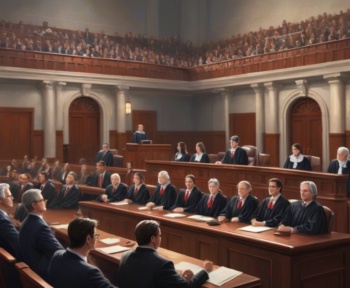Michael Strahan recently found himself amidst a national outcry after a seemingly small gesture during a national anthem ceremony stirred substantial public debate. The incident unfolded during a “Fox NFL Sunday” broadcast on Veteran’s Day at Naval Base San Diego. Notably, instead of the traditional hand-over-heart gesture during the anthem, Strahan was seen holding his hands in front of him, which led to a swift backlash, as it was perceived by some as a sign of disrespect toward the military.
Strahan, known for his illustrious NFL career and charismatic television presence, is no stranger to the spotlight, but this controversy highlighted a sensitive vein in American culture. Given his upbringing on a military base in Germany and his deep familial ties to the military, the event showcased how easily actions could be misinterpreted.
The debate was sparked when attendees noticed Strahan’s non-traditional pose during the anthem, leading to a swift spread of criticism across various social media platforms. Accusations of disrespect and lack of patriotism flooded in, displaying the powerful role national symbols play in American identity and the expectations placed on public figures in how they engage with these symbols.
Recognizing the gravity of the situation and the outpouring of emotion it elicited, Strahan issued a heartfelt video explanation to address and clarify the incident. In his statement, he mentioned that the moment was not about making a political statement but was instead a result of his profound emotional reaction to being surrounded by service members. His gesture was unintentional, driven by being deeply moved rather than any intent to disrespect.
Strahan’s response also revisited his personal connections to the military. With a history of military service in his family and his childhood spent on military bases, Strahan emphasized his enduring respect and admiration for the armed forces. His candidness and transparency in addressing the issue shed light on the complexity of public perceptions and the nuances of individual actions.
Support for Strahan came swiftly, particularly from those familiar with the demands of living under the public’s critical eye. Public figures such as Jay Glazer, Strahan’s colleague, and Nate Boyer, a former Green Beret and NFL player known for his reasoned approach to similar controversies, rallied to his defense. These endorsements were crucial, highlighting a broader industry perspective that sometimes understanding context and intent is as important as the action itself.
Amidst the unfolding drama, social media platforms became battlegrounds for debate and discussion, reflecting the divided opinions on Strahan’s action. While some continued to argue for strict adherence to traditional forms of respect, others advocated for a more nuanced understanding of the gesture, urging the public to consider Strahan’s longstanding respect for military traditions.
This incident isn’t isolated in terms of the resonance and reactions connected to national symbols at public events. Similar events have repeatedly ignited national debates, particularly given their occurrences at large-scale sporting events which often serve as stages for patriotic expressions. These controversies often lead to broader discussions about freedom of expression vs. traditional forms of patriotic display, illustrating the complex interplay between individual rights and collective cultural expectations.
The Strahan incident calls for a reflection on how public figures are perceived and the meanings imbued in their actions. It underlined the need for dialogue and the importance of context in understanding actions that occur in the public eye. Strahan’s own background and his quick addressing of the controversy aided in turning what could have been a one-sided backlash into a learning opportunity for a broader audience.
His ordeal ultimately serves as a microcosm of the broader societal challenges in interpreting symbols and gestures. It provides a compelling narrative about the evolution of public understanding and the impact of personal history on public perception. As the conversations around his gesture dissipate, what remains is a clearer picture of how deeply symbolic acts are woven into the fabric of national identity and how they continue to challenge and redefine norms of public behavior.
In drawing from this incident, there is an opportunity for public discourse that supports growth and mutual respect over precipitate judgments. Strahan’s experience, marked by both critique and support, illustrates the delicate balance between individual expression and the power of collective symbols in American society. Through fostering open dialogue and striving to appreciate the broader context, society can better navigate the complexities of identity, respect, and patriotism that continue to evolve in today’s dynamic cultural landscape.




